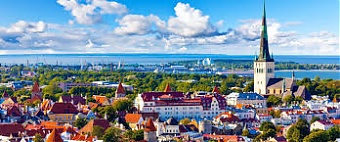Analytics, Banks, Economics, EU – Baltic States, GDP
International Internet Magazine. Baltic States news & analytics
Monday, 15.12.2025, 13:52
Luminor: Estonia's economic growth to fall below 3% mark in 2019
 Print version
Print version |
|---|
"Estonia's strong GDP growth of 3.9% in 2018 is
expected to follow a general moderation trend evident in external markets, and
fall below the 3% mark in 2019 with a slower momentum in Euro area and the
Nordic countries. Caution is warranted with headwinds continuing in the
external environment with global trade uncertainty and US-China trade
negotiations in progress," the economic outlook by Luminor says.
It says that consumption will which be a key growth engine
for Estonia in the next years. The strong labor market is expected to deliver a
substantial contribution to Estonia’s growth in 2019 along with modest growth
in investments and exports. Global trade uncertainty remains the key risk
factor for the future.
"Prioritization and focus on measures to boost
long-term growth potential of the economy could contribute to sustainable convergence
with euro-area income levels and help to address a number of future demographic
challenges. Is the balance of investments going to be tilted more heavily
towards infrastructure spending bills or more human capital investments remains
among the key choices going forward," Tonu Palm, chief economist at Luminor
Estonia, said.
He said that Europe faces increasingly global
competitiveness challenges with the speed of global technological and digital
transformation under way. Investment to future long-term growth could address
notable research, education, targeted elderly care social services and smart
infrastructure, including digital economy and smart cities.
Pointing out that the average gross monthly wage in Estonia
has grown by no less than 58 % since 2011, Palm said that as a remarkable
achievement, the still very much half way income convergence has already
manifested itself in four consecutive years of population growth. Population
decline has now clearly turned to the growth path with remigration flows and
attracting skilled foreign labor, including from from developed countries, to
fill the increasing labor demand.
Estonia's GDP per capita reached ca 79% of the average for
the EU28 in 2017, at par with Portugal, but still far away from average levels.
The number of people who arrived in Estonia in 2018
surpassed the number of those who left by 6,095. When we add to it some 20,000
foreign workers who stayed in Estonia as short-term workers, this indicator
becomes even more remarkable. In this way Estonia is gradually becoming
attractive for labor from the European Union, which in its turn helps to ease
the main problem of the labor market -- increasing shortage of skilled labor,
according to Luminor.
The Estonian economy has achieved significant success in the
field of digital economy. On the back of expanding ICT sector it is possible to
raise the value-added of also other branches, including the industry. In
addition, digitization of companies and more active introduction of new technologies
would enable to further increase the share of the export of services, which is
a direction followed by an ever growing number of economies, Palm added.








 «The Baltic Course» Is Sold and Stays in Business!
«The Baltic Course» Is Sold and Stays in Business!

